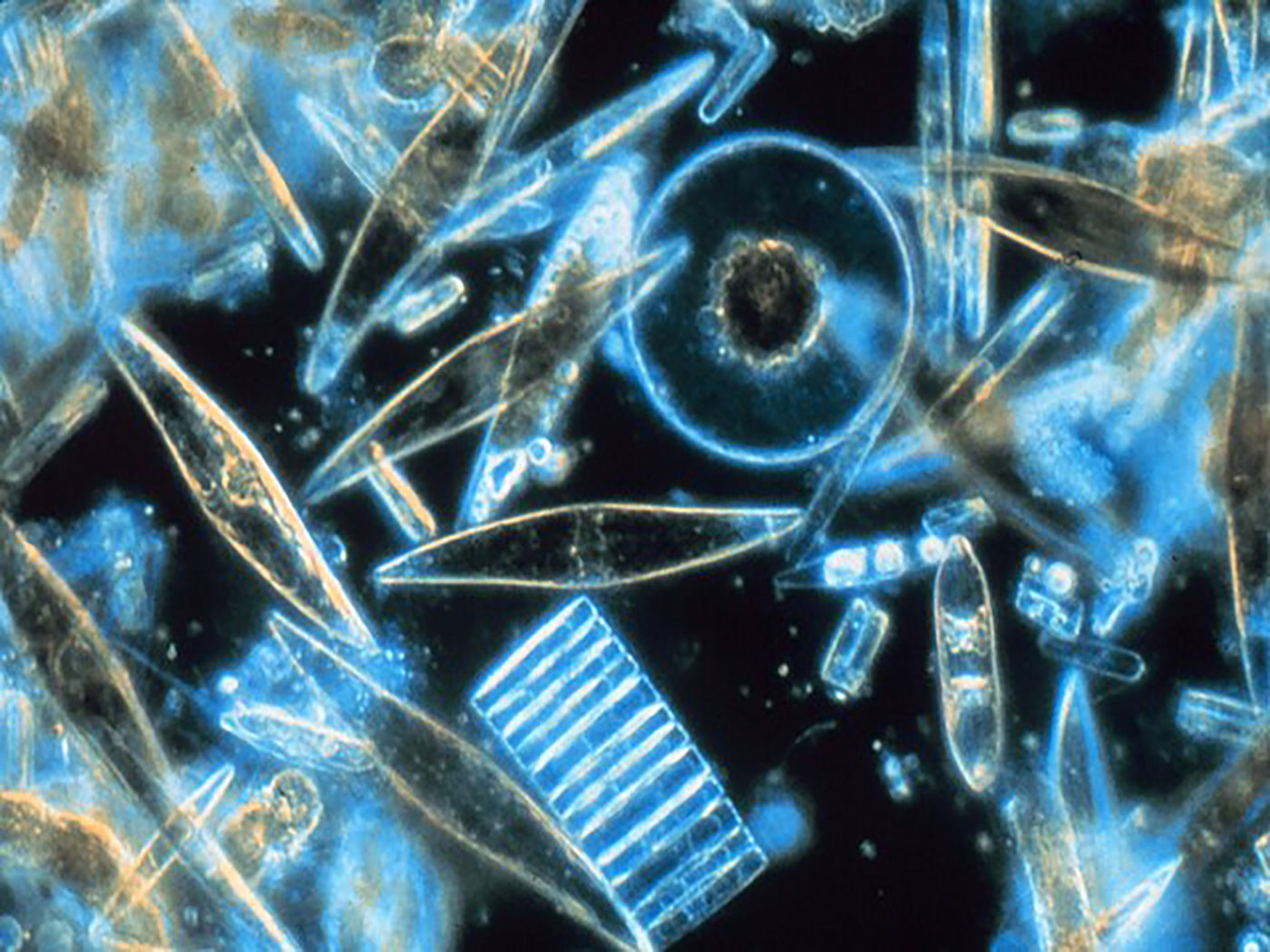Human eyes are well-designed to see objects using light transmitted through air, but not through water, because light travels at a different speed through the two media. However, intertidal-dwelling marine mollusks called chitons can see equally well in both environments. How did they acquire this unusual ability?
Chitons scour intertidal rocks for algae meals. Eight integrated shell-plates cover their backs, and a muscular foot allows them to cling with surprising strength to the rocks they traverse. A recent study explored their unique dual-mode eye design. How do they see in both air and water without switching out eye lenses, and is this an "adaptation," as suggested in a summary in ScienceNOW?1
Researchers publishing in Current Biology tested chiton eye lenses and discovered they were the first ever known to be made of the hard mineral aragonite.2 Chiton shells are also made primarily of aragonite, but the use of this material in an eye lens turns out to be an elegant solution to the problem of forming quality images in either air or water.
"The mineral bends the incoming rays in two directions and creates a double image," according to ScienceNOW.1 The researchers suspect that the chiton capitalizes on the two angles, or "refractive indices," of transmitted light to form an image in either environment. The study authors wrote, "We propose that one of the two refractive indices of the birefringent chiton lens places a focused image on the retina in air, whereas the other does so in water."2 The use of aragonite for a lens material could potentially be copied by optical engineers for many applications.
"The adaptation makes sense, as chitons live in intertidal zones and spend time above and below the water line," ScienceNOW reported.1 But who is to say that the chiton eye was the result of random "adaptation" and not intentional design?
Chiton eye specifications include the thickness, size, and placement of aragonite lenses on the chiton's shell…coordinated with internal light-detecting soft tissues like membranes and specified proteins. All these are needed just to detect a raw light signal. Therefore, these eyes have such incredibly ingenious engineering that the burden of proof lies with the one who insists that chiton eye specifications are natural "adaptations" rather than intelligently specified designs.
Also, the study showed "that chitons can distinguish between approaching predators and the general dimming of light that might be caused by a passing cloud."1 Thus, a visual processing portion of the brain exists in order for the animal to form meaningful images from the light.3 Without all these features in place all at once, the chiton would remain blind and there would be no trait for "nature" to "select."
What are the chances of all these features just coming together at the same time without directed intent? And what are the chances of blind chitons surviving amidst a sea of predators for millions of years while they waited for their eyes to evolve?
The fossil record of chitons shows no adaptations toward eyes, but only fully formed chitons. And their fossils are found in almost all the named layers of fossil-containing rocks. They suddenly appear fully formed, with no evolutionary ancestors, and remain unchanged to this day as if they had been uniquely and completely created.
The dual-functioning chiton eyes, which add to the list of wholly different but wholly formed visual systems in the animal world, present their unique case for creation.4,5,6,7,8,9
References
- Meyers, C. 'Rock Eyes' Help Mollusk See Above Water. ScienceNOW. Posted on news.science.org April 14, 2011, accessed April 26, 2011.
- Speiser, D. I., D. J. Eernisse, and S. Johnsen. 2011. A Chiton Uses Aragonite Lenses to Form Images. Current Biology. 21 (8): 665-670.
- Thomas, B. It Takes More Than Eyes to See. ICR News. Posted on icr.org June 25, 2009, accessed April 27, 2011.
- Thomas B. Tubular Fish Eyes Defy Evolution. ICR News. Posted on icr.org March 3, 2009, accessed April 27, 2011.
- Thomas B. Moth Eye Technology Proves Difficult to Copy. ICR News. Posted on icr.org June 14, 2010, accessed April 27, 2011.
- Thomas B. Beetle Larva Bifocals Are Better than Manmade. ICR News. Posted on icr.org August 30, 2010, accessed April 27, 2011.
- Thomas B. Eye Optimization in Creation. ICR News. Posted on icr.org November 23, 2010, accessed April 27, 2011.
- Thomas B. Shrimp Eye May Inspire New DVD Technology. ICR News. Posted on icr.org November 4, 2009, accessed April 27, 2011.
- Bergman, J. 2008. Did eyes evolve by Darwinian mechanisms? Journal of Creation. 22 (2): 67-74.
* Mr. Thomas is Science Writer at the Institute for Creation Research.
Article posted on May 6, 2011.











